I have a 8th order transfer function, you can see it in the first image:
% Transfer function
num = [2.091,0,203.3,0,-2151,0,-1.072e05];
den = [1,0,-830.4,0,-1.036e05,0,-5.767e05,0,2.412e07];
tf = tf(num, den)
I need to use a PID, so I'm trying to use a compensator, adding poles and zero with the sisotool in MatLab to turn it stable. But iI tried, I tried, and tried, without success. How you can see in picture bellow. But the zero on the right side always holds a pole. Note: Red zeros and poles have been added, and blue ones belong to the original transfer function.
My question is: Is it possible stable this function adding zeros and poles, or not ?
Any tips ?
Note: I must use a PID for this lesson :(


